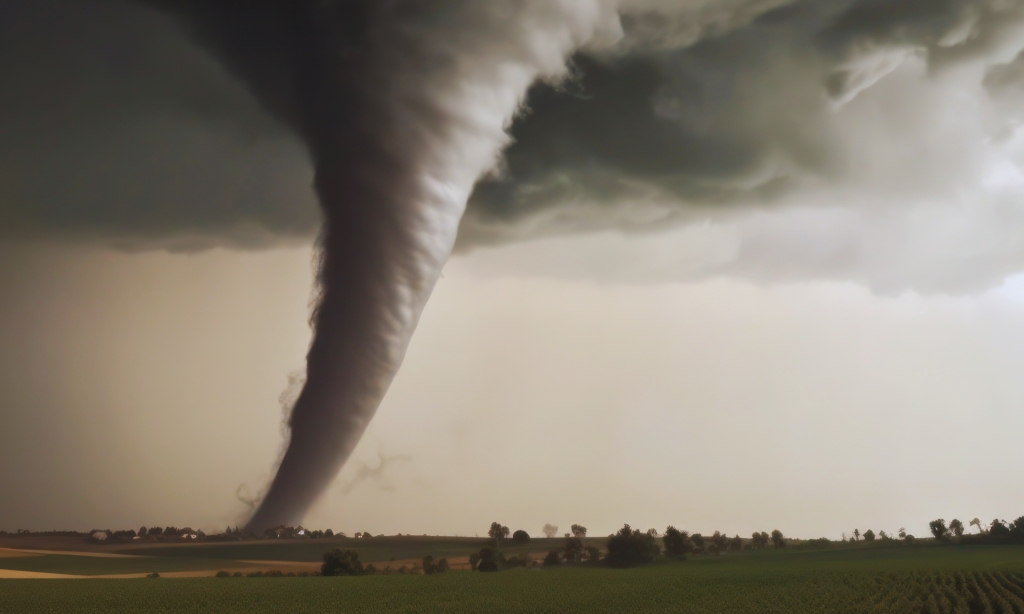Super fact 40 : In chaotic systems the so-called butterfly effect means that a small change in initial conditions, such as a butterfly flapping its wing in Brazil, can lead to large, unpredictable changes in a system’s future, such as the appearance of a tornado in North Texas. However, that does not mean that the butterfly directly caused the tornado. It should also be noted that chaotic systems can contain predictable patterns and external forcings can certainly make aspects of a chaotic system behave in a predictable manner.
The first part of Super Fact 40 describes a well-established phenomenon that is often surprising to people who have not heard about it before. The second part (following the word “However”) address a few common misconceptions about the butterfly effect. The butterfly effect is a surprising and widely misunderstood phenomenon and therefore I consider the information in bold above to be a super fact.

The Butterfly Effect and Unpredictability
The butterfly effect is the sensitive dependence on initial conditions in which a small change in one aspect of the system can result in large differences later. A butterfly flapping its wing in Brazil, leading to the appearance of a tornado in North Texas, is one example. The butterfly effect is an aspect of chaos theory.
However, it is important to understand that the butterfly is not directly causing the tornado. It is the wing flaps of trillions of butterflies, the wing flaps of 50 billion birds, the barks of 900 million dogs, all the waterdrops in the world, and all the bushes and trees, etc., which together provide the initial conditions for the world’s weather system.
Remove one butterfly, anyone of them, or the bark of a dog, and you may or may not have a tornado in north Texas on a certain date. It isn’t the butterfly causing the tornado. Any tiny change in the initial conditions will eventually lead to a large difference in the system later. This is how the Butterfly Effect provides unpredictability.

The Butterfly Effect and Predictability
Because of the butterfly effect you may not be able to predict whether it is going to rain at 1:00PM next Thursday, but you can still safely predict that Dallas, Texas, will on average be cooler in January than in July. That’s largely because the sun will heat Dallas, Texas more in July than in January. We know that if you add carbon dioxide, or other heat trapping gases, to the atmosphere it will on average get warmer. External forcings make aspects of chaotic systems predictable. You sometime hear the argument that “climate is chaotic and cannot be predicted”. This is a myth that is debunked here.
In addition, chaotic systems can feature predictable patterns, even though chaotic systems are considered unpredictable. Chaos theory demonstrates that within the apparent randomness of chaotic systems, there are underlying statistical patterns, self-similarity, fractals, and interconnection.
I once created a robot control system for which the robot was shaking a little bit. The tool tip was moving in a little circle and did not get to where it was supposed to be. The reason was that the presence of static friction made the control system I was using a chaotic system.
However, the robot didn’t randomly go all over the place. It was moving quickly in a small circle. It was chaotic, and its exact motion was unpredictable, but there was an underlying statistical pattern. Another example is, fractals, which are geometric patterns that emerge from chaotic processes described by chaos theory. Fractals feature self-similar patterns repeating at different scales. They can visually represent the complex behavior of these systems. See an example below.

Edward Norton Lorenz
In 1961, Edward Norton Lorenz was using a computer to simulate weather patterns by modeling 12 variables (heat, wind, etc.). After finishing one simulation he wanted to see it again but to save time he started it in the middle using the saved variables at the point. To his surprise his simulation ended up with completely different weather. He realized that the computer the saved data had tiny errors from the computer rounding off the numbers. For example, 3.145787 instead of 3.1457872. That small difference was enough to eventually result in completely different weather.
Lorenz was not the first person to realize that, so called, non-linear systems can be extremely sensitive initial data. This realization goes all the way back to the mathematician Henri Poincaré in the 19th century. However, he was the founder of modern chaos theory and coined the term the Butterfly Effect.
To see the other Super Facts click here
What do you think about the Fractal above?


I loved the idea behind the Butterfly Effect ever since I learned about it. This must be one of my favorite superfacts.
Wishing you and yours a blessed time.
LikeLiked by 1 person
Thank you so much Patricia. It is a fascinating topic. I wish you a blessed time as well.
LikeLiked by 1 person
I have always found the discussion surrounding the butterfly effect to be interesting, so this was a pleasure to wake up to.
LikeLiked by 1 person
Thank you so much for your kind words Violet. It is an interesting subject.
LikeLiked by 1 person
Simply fascinating!
LikeLiked by 1 person
Thank you Luisa
LikeLiked by 1 person
You’re most welcome 🌹
LikeLiked by 1 person
Great explanation as usual. I have seen the butterfly effect term used in a few different articles lately, but I don’t think those authors used it correctly, and likely didn’t understand it themselves. Maggie
LikeLiked by 2 people
Thank you so much Maggie. It is easy to missunderstand what it means.
LikeLike
Hi Thomas, I have never heard of the butterfly effect. Very interesting information. I hope you had a lovely Easter.
LikeLiked by 2 people
Jurassic Park mentions it…that’s how I learned the “butterfly effect” exists. 🙂
LikeLiked by 1 person
Oh yes you are right. I remember that now.
LikeLiked by 1 person
I’ll have to rewatch that movie 🌞
LikeLiked by 1 person
Thank you so much Robbie. Greg probably knows about it.
LikeLike
I must ask him
LikeLiked by 1 person
The butterfly effect is such an interesting phenomena, but it’s everywhere. I think of it as a ripple and see it moving in our lives every moment in relation to choices. Something completely inconsequential in the moment, can change the future. The discussion or chaos and patterns was fascinating. Thanks for the fun post, Thomas.
LikeLiked by 1 person
Yes you are right Diane, it is everywhere, and every butterfly and every bird and every cat are part of it. It creates unpredictability at the same time as certain aspects of chaotic systems are still predictable. That’s one thing that confuses people.
LikeLike